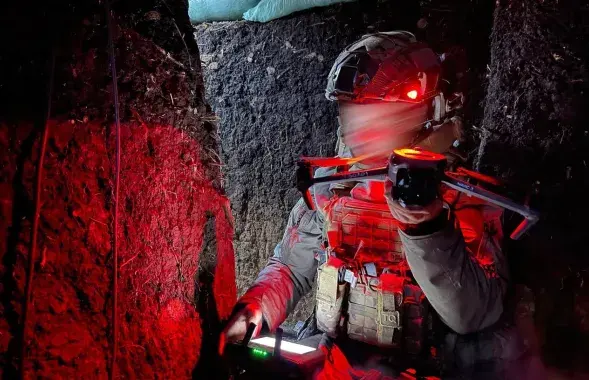Transparency of elections in Belarus costs $27 million?
Experts from the National Academy of Sciences estimate that over $26.6 million are required in order to equip all the polling stations in this country with transparent ballot boxes. In an interview with the European Radio for Belarus, Mikalai Ramanyuk, head of human resources department at the National Academy of Sciences, mentioned attempts to organize production of transparent ballot boxes by domestic manufacturers. Eventually, they had to back off from this idea after realizing even the preliminary cost of the project.
"We wanted to launch this production at the Termoplast factory. But the factory did not have a machine for pressing such a ballot box. We estimated back then that one set of ballot boxes (3 -- big size and 3 -- small size) would cost around Br8 million ($4000 according to the exchange rate during the previous elections. When we add visual aids, booths and ballot boxes, the amount will be around Br16 million or $7000-8000 to equip one polling station. If we take 5000 polling stations across the country, we will end up with astronomical sums”.
The Central Electoral Commission also points to high costs when refusing to replace timber boxes with the new transparent ones. Lidzia Yarmoshyna, chairperson of the Central Electoral Commission, reckons that polling station managers could fabricate such a ballot box if they have a desire and resources. However, there will be no national program to replace the old timber boxes.
Mikalai Lazavik, secretary of the Central Electoral Commission, insists that it is not serious to raise the issue of home-made plastic boxes and the presence of transparent boxes at polling stations. He said: "It is a profanation of the election transperancy notion to boil down to transparent boxes. At times, this issue is given too much attention. But all of us -- me and you -- understand that absolutely non-transparent elections can be held with absolutely transparent ballot boxes".
Transparent early voting is one of the main requirements of the OSCE, since both the local independent and foreign experts point to early voting as a basis for election falsifications.
The Central Electoral Commission insists that nothing will be abolished, while it will ensure transparent elections. Officials promise that the during ballot count, observers will be able to see the table with ballots rather than the backs of members of the electoral commission. Observers will also be allowed to be present when ballot boxes are sealed every evening. However, observers will not be allowed to monitor ballot boxes at night. There will be no signatures of ther chairman of the electoral commission on the copies of protocols.
In Ukraine, as far back as in 2004, the parliament passed a law on elections which envisaged only transparent ballot boxes. Back then, one ballot box cost around $68. Today, the cost of one small-size plastic box in Ukraine is nearly $56. The production of ballot boxes is funded by the national budget.
Our eastern neighbors also decided to equip all polling stations with transparent boxes by 2016. According to the estimates of Russia's Central Electoral Committee, the cost of one ballot box is nearly $137.
There were 6659 polling stations during the last presidential elections in Belarus. If we use the estimates of the National Academy of Sciences, there will be a need for over $26.6 million in order to equip them with transparent ballot boxes. At the same time, the 2004 Law on Election and Referenda Budget envisages only $6 million.
Photo: kasparov.ru
"We wanted to launch this production at the Termoplast factory. But the factory did not have a machine for pressing such a ballot box. We estimated back then that one set of ballot boxes (3 -- big size and 3 -- small size) would cost around Br8 million ($4000 according to the exchange rate during the previous elections. When we add visual aids, booths and ballot boxes, the amount will be around Br16 million or $7000-8000 to equip one polling station. If we take 5000 polling stations across the country, we will end up with astronomical sums”.
The Central Electoral Commission also points to high costs when refusing to replace timber boxes with the new transparent ones. Lidzia Yarmoshyna, chairperson of the Central Electoral Commission, reckons that polling station managers could fabricate such a ballot box if they have a desire and resources. However, there will be no national program to replace the old timber boxes.
Mikalai Lazavik, secretary of the Central Electoral Commission, insists that it is not serious to raise the issue of home-made plastic boxes and the presence of transparent boxes at polling stations. He said: "It is a profanation of the election transperancy notion to boil down to transparent boxes. At times, this issue is given too much attention. But all of us -- me and you -- understand that absolutely non-transparent elections can be held with absolutely transparent ballot boxes".
Transparent early voting is one of the main requirements of the OSCE, since both the local independent and foreign experts point to early voting as a basis for election falsifications.
The Central Electoral Commission insists that nothing will be abolished, while it will ensure transparent elections. Officials promise that the during ballot count, observers will be able to see the table with ballots rather than the backs of members of the electoral commission. Observers will also be allowed to be present when ballot boxes are sealed every evening. However, observers will not be allowed to monitor ballot boxes at night. There will be no signatures of ther chairman of the electoral commission on the copies of protocols.
In Ukraine, as far back as in 2004, the parliament passed a law on elections which envisaged only transparent ballot boxes. Back then, one ballot box cost around $68. Today, the cost of one small-size plastic box in Ukraine is nearly $56. The production of ballot boxes is funded by the national budget.
Our eastern neighbors also decided to equip all polling stations with transparent boxes by 2016. According to the estimates of Russia's Central Electoral Committee, the cost of one ballot box is nearly $137.
There were 6659 polling stations during the last presidential elections in Belarus. If we use the estimates of the National Academy of Sciences, there will be a need for over $26.6 million in order to equip them with transparent ballot boxes. At the same time, the 2004 Law on Election and Referenda Budget envisages only $6 million.
Photo: kasparov.ru



















